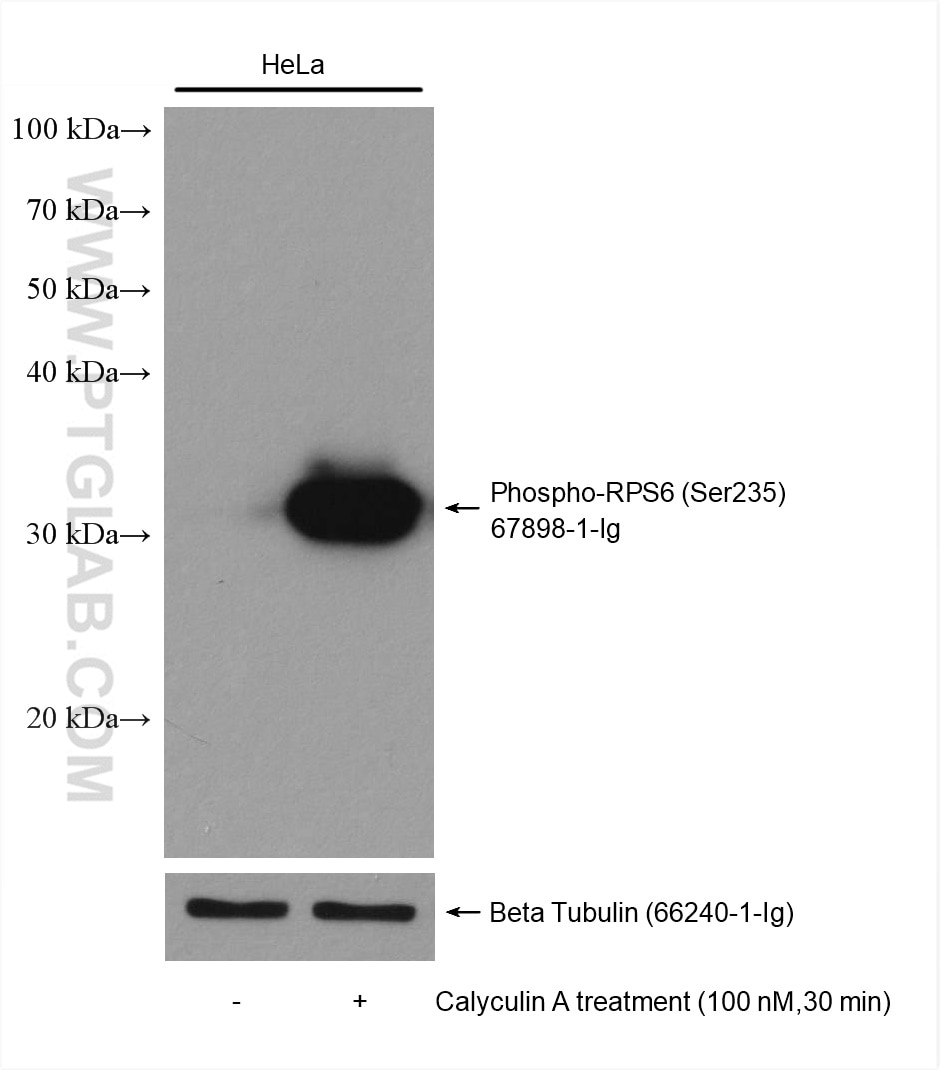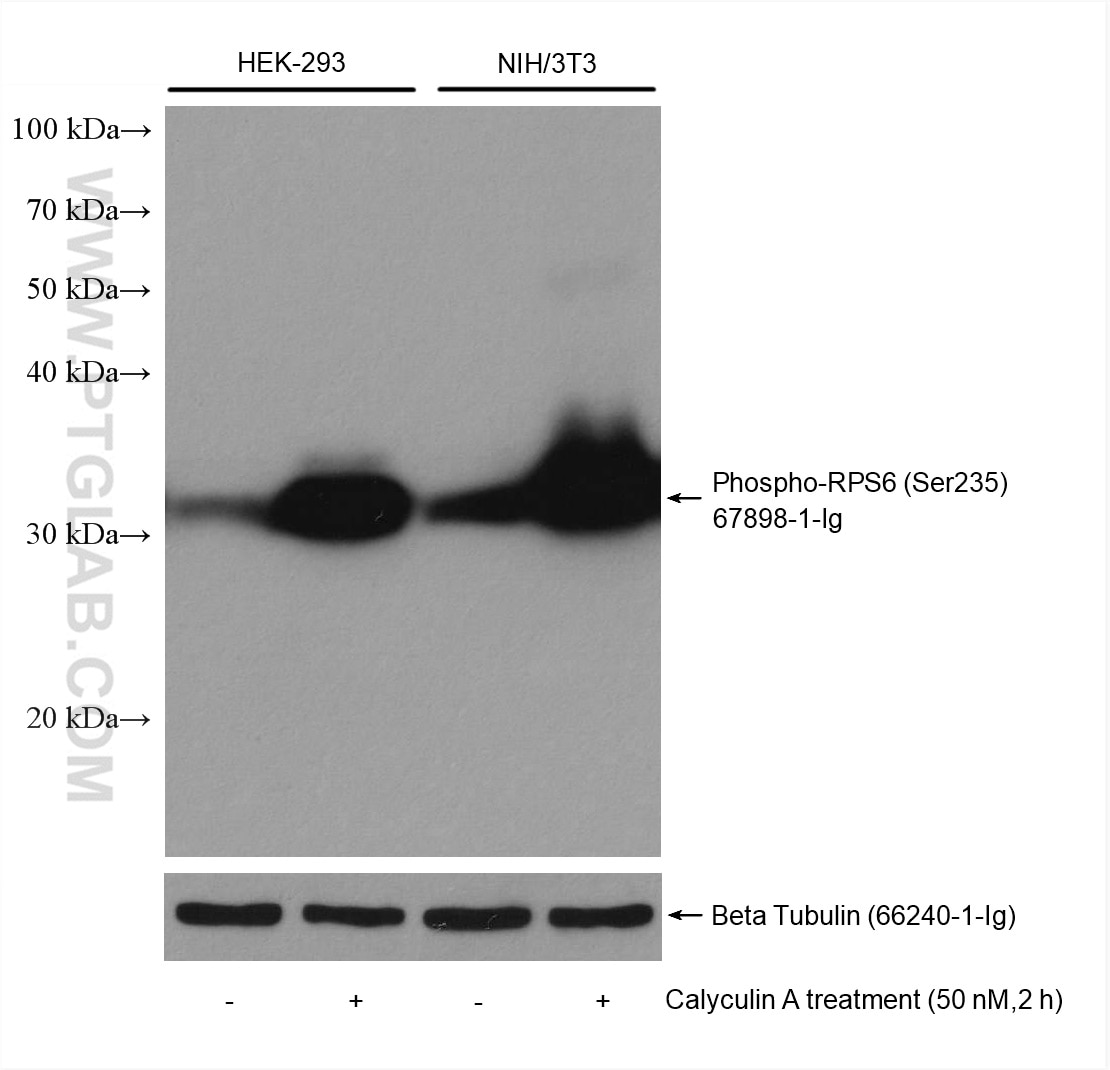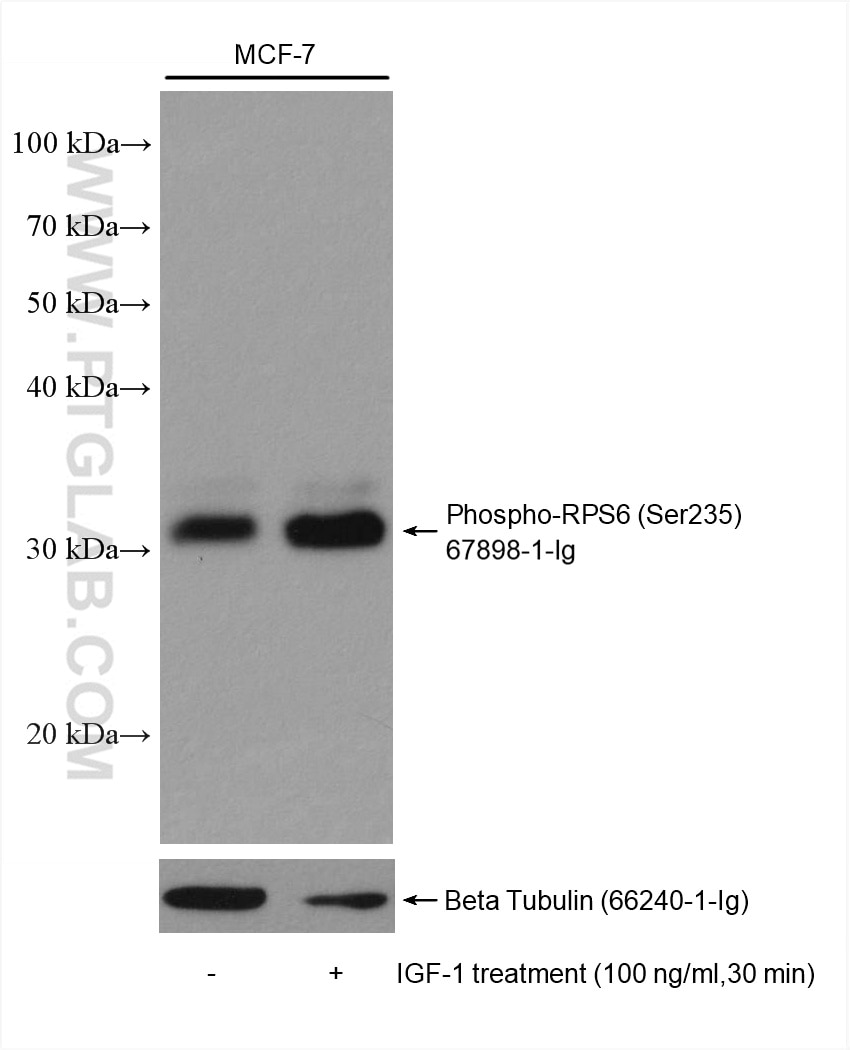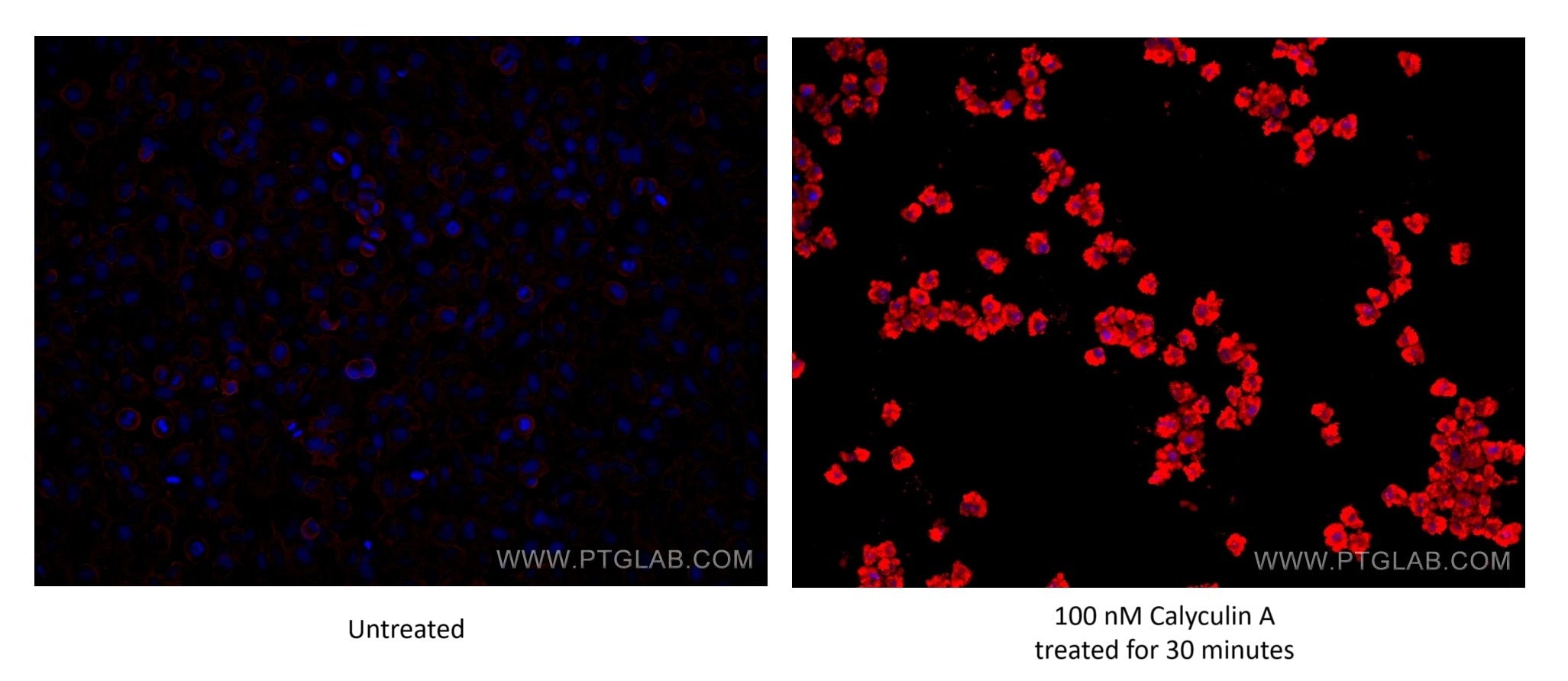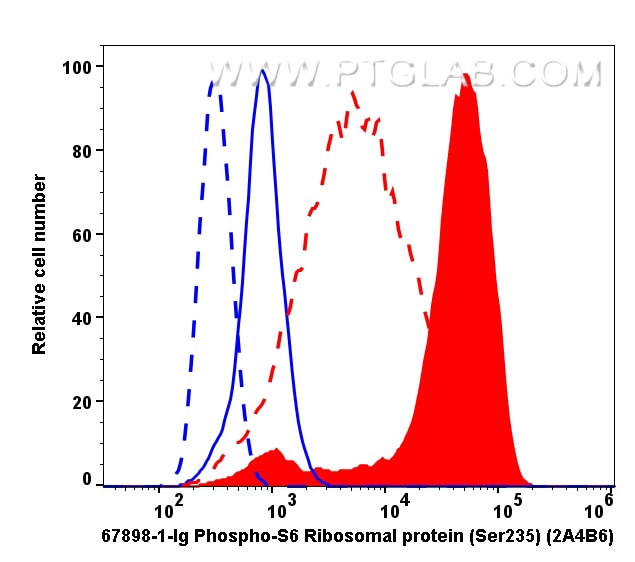Product Information
67898-1-PBS targets Phospho-S6 Ribosomal protein (Ser235) in WB, IF/ICC, FC (Intra), Indirect ELISA applications and shows reactivity with human, mouse, rat samples.
| Tested Reactivity | human, mouse, rat |
| Host / Isotype | Mouse / IgG2b |
| Class | Monoclonal |
| Type | Antibody |
| Immunogen |
Peptide Predict reactive species |
| Full Name | ribosomal protein S6 |
| Calculated Molecular Weight | 29 kDa |
| Observed Molecular Weight | 32 kDa |
| GenBank Accession Number | BC000524 |
| Gene Symbol | RPS6 |
| Gene ID (NCBI) | 6194 |
| RRID | AB_2918654 |
| Conjugate | Unconjugated |
| Form | Liquid |
| Purification Method | Protein A purification |
| UNIPROT ID | P62753 |
| Storage Buffer | PBS only, pH 7.3. |
| Storage Conditions | Store at -80°C. |
Background Information
Ribosomal protein S6 (RPS6) is one of the components of the 40S ribosomal subunit. RPS6 has been functionally regarded as the stimulator and/or inhibitor of certain types of mRNA translation, as well as the regulator of cellular metabolisms, cells size, survival and proliferation. RPS6 is phosphorylated at multiple sites, comprised between Ser235 and Ser247, by the p70 rpS6 kinase (S6K) 1, which is a major downstream effector of the mammalian target of rapamycin complex 1 (mTORC1). Phosphorylation of RPS6 at the dual site Ser235/236 occurs also independently of mTORC1, via the p90 ribosomal S6 kinases (RSK), which are activated by the extracellular signal-regulated kinases (ERK). Recent studies performed in pancreatic β-cells identified PKA as an additional RPS6 kinase, specifically involved in the phosphorylation of Ser235/236. (PMID: 26490682, PMID: 21814187, PMID: 31112404). 67898-1-Ig specifically recognizes the phosphorylation site of Ser235 or dual site Ser235/236.

